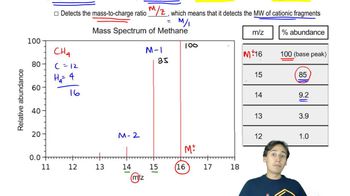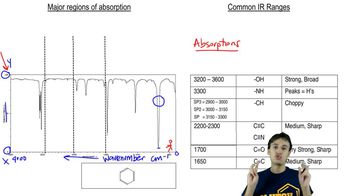Using curved arrows, show the principal fragments you would expect to see in the mass spectrum of each of the following compounds:
d.
 Verified step by step guidance
Verified step by step guidance Verified video answer for a similar problem:
Verified video answer for a similar problem:



 4:28m
4:28mMaster Ionization Potentials with a bite sized video explanation from Johnny
Start learning